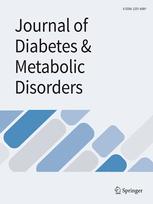Comparison of EWGSOP-1and EWGSOP-2 diagnostic criteria on prevalence of and risk factors for sarcopenia among Iranian older people: the Bushehr Elderly Health (BEH) program
Authors
Affiliations
Abstract
Background: This study proposed to compare the prevalence and risk factors for sarcopenia by EGWSOP-1 and EWGSOP-2 diagnostic criteria in Iran.
Methods: This cross-sectional study was conducted based on the data collected during the Bushehr Elderly Health (BEH) Program, stage II. Sarcopenia was defined as 3 definitions: EWGSOP-1(with Iranian cut off), EWGSOP-2(with Iranian cut off), EWGSOP-2(with European cut off) definition. We evaluated the age-standardized prevalence of sarcopenia in both genders. Regression analysis was used to show the associations in the adjusted models.
Results: Among 2426 participants, age-standardized prevalence of sarcopenia, and severe sarcopenia by EWGSOP-1 were 19.7%, and 12.9%, in men and 13.6%, and 16.7% in women, respectively. When we used EWGSOP-2 (with Iranian cut-off) criteria, these values were 10.5%, and 12.7% among men and 7.13% and 16.5% in women, respectively. The prevalence sarcopenia and severe sarcopenia by EWGSOP-2 (with European cut-off) were 12.7%, and 13.4% in men and 5.42%, and 13.7% in women, respectively. In both genders, getting older and high-fat mass were positively associated with sarcopenia, and BMI had a significant inverse association in both genders and all defintions.
Conclusions: Results showed that a prevalence of sarcopenia varied largely by using different criteria, in both sexes. EWGSOP2- defined sarcopenia prevalence was lower than that defined using EWGSOP-1 criteria due to different diagnostic factors to detect sarcopenia. Some adverse outcomes should be considered for evaluating sarcopenia to compare the accuracy of EWGSOP-1 and EWGSOP-2.
Keywords: EWGSOP-1; EWGSOP-2; Prevalence; Sarcopenia.

